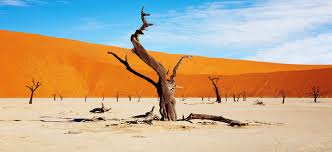Despite the fact that I have traveled to more than 50 countries on six continents (I am missing Antarctica), preparing for a trip to an unknown and faraway destination is still perplexing. As I plan for my trip to Namibia, I must ponder, among other things, logistics, medications, documentation, and fashion. Here's a list of 9 things I need to figure out before going to Africa...and things you should think about as well before taking off to distant lands.
 |
| www.cia.gov |
1 Do I need a visa? Official media are supposed to have visas to enter Namibia, but your garden variety American tourist does not. Although I am going to Namibia to write about
The Jewel of the Desert train, I am opting to go visa-less (please, Namibia's version of Mr. E. Snowden, don't tell on me). After all, as a travel writer, my mission is to have the
same experience as regular travelers do. So, no visa for me, although I will be sure to bring my VISA card...and an ATM card to boot.
2. Do I need more pages in my passport? Apparently, the answer is yes. For some reason, Namibia requires everyone to have 4 to 6 blank passport pages. As I am on Year 9 of a ten-year passport, I only have one blank page left. Should I wing it? According to a colleague at
Solimar International , a firm that does tourism consulting work in Namibia, the answer is a definite no. Said colleague spent the better part of the day in Windhoek Airport, while one of his co-workers had to zoom over to the local American Embassy for pages. Thankfully, I live in Washington, DC (how often do you hear someone say that these days?), very close to the National Passport Center. And thankfully, the NPC is not closed due to the shutdown. (LIVE BULLETIN from the NPC--it costs $142 to add passport pages versus $170 for a new passport. But given that I am not looking passport-picture-pretty today, I am opting to fork over the $142 and spend another $170 in a few months when I am sporting my TV Laura mien).
3. Do I need shots or malaria pills? Shots--no. Malaria pills? It's not clear. I hope that copious doses of mosquito spray will keep the buggers away while I am sleeping under the stars in
Ethosha National Park.
 |
| en.wikipedia.org |
4. What about money, honey? Apparently, the Namibian dollar is on par with the South African rand, and the latter is accepted everywhere in Namibia. As the Namibian dollar is not easily convertible on the world market, best to stock up on rand. That way, leftover money can be exchanged back into US dollars.
5. What do I wear? I am oft vexed regarding visitor vestments, particularly when I travel to the Middle East or Africa. When I went to Morocco in 2001 (geographically in Africa; culturally, it could be argued, the westernmost part of the Middle East), I had a two-fer on my hands. I was
verklempt, as everything I owned was too tight, too short, or too colorful. I ended up purchasing a bunch of long, oversized
schmatas. The Moroccan men, unstereotypically, paid me no mind, but the women there didn't seem to appreciate my valiant efforts to mask my feminine wiles. Methinks hunting for safari clothing will be easier, but I still must find items that will cover me up (mainly to ward off bugs and to protect against the scorching sun).
 |
| www.abercrombieandkent.co.uk |
6. How do I allay the heat? As frequent readers will recall, during my most recent adventure,
I swooned in the Forbidden City and had to spend the night in a Beijing ER. As a result, I am stocking up on
electrolytes,, bringing a huge sombrero, and slathering on suntan lotion.
7. What unusual items do I need? This type of journey requires gear not usually included on my packing list. Bug spray; a flashlight; a water purifier; a beanbag (to serve as a camera stabilizer in jittery jalopies); and the aforementioned electrolyte tablets are some of the extras I will stow.
8. How am I going to survive the 18-hour flight? I am taking
South African Airways from Washington, DC to Johannesburg--an 18-hour jaunt.
I can't afford business class, so I can only hope my aisle seat in coach allows me to stretch my gams. I am also bringing along various travel accessories to road test. I'll let you know how they work.
9. How many days will it take me to get over jet lag? Fortunately, the time difference is, surprisingly, only 6 hours. Therefore, spending my first night in Africa at the
Intercontinental Hotel at the Johannesburg Airport (smart move) and my second night at the
Okapuka Ranch near Windhoek should mean, presumably, Dr. Livingstone, I will be well-rested when my official explorations begin.


























 Please follow me on Twitter @dailysuitcase
Please follow me on Twitter @dailysuitcase